It’s hard to believe it’s been five years since I published Real Food for Pregnancy!
I never could have expected that this book would impact so many lives. This project was an undertaking to say the least. I often joke that a lot of blood, sweat, tears, and breast milk went into this, since I started writing at 10 months postpartum after my first baby was born.
I’m deeply grateful for all of the support I’ve received (3,300+ reviews on Amazon and counting!), the many foreign language translations now available, the university courses that use it as a textbook, the 35 CEUs that it offers for dietitians, the wholesale orders from practitioners who stock it in their office, and so much more. Thank you!
One of the hardest parts of publishing a book (for me, anyways), is to know when it is “done.” Every week, new studies on pregnancy nutrition come out, and I was adding new research into Real Food for Pregnancy just weeks before it went to print.
At some point I will put out a second edition of the book that incorporates this data, but for those that don’t know, I share short research briefs on my Instagram to keep my audience up-to-date on the latest prenatal nutrition research. You can also find more in-depth content here on the blog, in webinars from the Women’s Health Nutrition Academy, and now, in my mentorship program called the Institute for Prenatal Nutrition®.
On that note, in this article I’ll highlight 10 interesting studies that have been published since Real Food for Pregnancy hit the market. These studies add even more rationale to embrace eating real food for pregnancy!
10 recently published studies that I wish were in Real Food for Pregnancy
1: High choline intake during pregnancy benefits childhood attention span
Choline is an essential nutrient that plays a significant role in early brain development. An accumulating body of data suggests that the Adequate Intake (AI) level for choline during pregnancy of 450 mg/d is set too low. Even so, <6-10% of U.S. women even reach the AI.
In Real Food for Pregnancy, I cite a randomized controlled trial in which mothers consumed either 480 or 930 mg/day of choline during the 3rd trimester. In toddlerhood, children born to mothers with higher choline intake scored better on a variety of tests related to cognitive function.
Now, a follow-up study of these same children at age seven has assessed whether the benefits of prenatal choline intake extended beyond toddlerhood.
Drum roll, please… Children whose mothers’ consumed 930 mg/day of choline scored better on markers of sustaining attention, working memory, problem-solving.
This study suggests that children have more sustained attention even 7 years into life when mothers consume high amounts of choline prenatally. This held true REGARDLESS of choline intake in infancy & childhood, showing that pregnancy is a critical window of time for a choline-sufficient diet. Learn more about the benefits of choline and how to get enough in your diet here.
2. Micronutrient guidelines for pregnancy and lactation are not as evidence-based as you think
Pregnancy is a particularly challenging life phase to study. Researchers often use “factorial methods” to estimate needs (i.e. estimating needs from another population, like non-pregnant women or men). But calculations are not the same thing as experimental or even observational data.
A 2021 review analyzed the 704 studies used in setting the DRIs for pregnancy. It will probably shock you to learn:
- Of all the studies included, only 17% included a single pregnant or lactating participant
- Out of all participants in all studies used to set the pregnancy DRIs, only 4.6% of participants were pregnant or lactating
- For 16 of 23 micronutrients, the reports did not consider any study including pregnant or lactating women in selecting key indicators
- For 18 of the 23 micronutrients, no pregnancy or lactating data was used in setting the so-called “upper limit”
- For the micronutrient DRIs, pregnancy health outcomes were not selected as indicators in determining requirements
Why does this matter? In their own words, “In certain instances, reference values may be inadequate for some populations because of underestimating the need and overestimating the risk from higher-dose supplementation, such as in the case of water-soluble vitamins.”
Without sufficient data in pregnancy specifically, the current rec’s are, at best, good guesses of what a pregnant woman truly needs. Consuming a diet that’s by default nutrient-dense (ala Real Food for Pregnancy) gives you the best chance of meeting all of your nutrient needs, even if new data reveals higher levels are optimal in future years.
3. Top nutrient-dense foods on the planet
A recent study looked at micronutrient density of foods to compile a global food composition database. For women of reproductive age, they found foods with very high micronutrient density included organs, small dried fish, dark green leafy vegetables, bivalves (clams, mussels, and oysters), crustaceans, goat, beef, eggs, milk, canned fish with bones, lamb/mutton, and cheese. You should note that bivalves were the only food to contain all six of the micronutrients studied.
This is important because there are >1.8 billion women of reproductive age across the globe, making them the largest population group. They are also at an increased risk of micronutrient malnutrition.
While taking supplements to make up for micronutrient deficiencies is certainly an option, eating real food has additional benefits beyond fortification. Nutrients within foods work together synergistically, but this synergy is lost when single nutrients are taken in isolation. Food first, always.
It was reassuring for me to read this study because all of the foods I highlight in the “Foods to Emphasize” chapter were on the list. You can bet I’ll be citing this study in a future edition of Real Food for Pregnancy!
4. Prenatal iodine deficiency is associated with several pregnancy complications
Iodine plays a key role in thyroid health, fertility, fetal brain development, and much more. A 2020 study out of Norway assessed iodine intakes in over 78,000 pregnancies. Shockingly, from food intakes alone, only 4.6% of pregnant women reached the World Health Organization’s recommended ≥ 250 mcg/day of iodine. This study also found higher rates of pregnancy complications and fertility challenges in those who underconsumed iodine.
Women with low iodine intake of <100 mcg/day had a significantly higher risk of preeclampsia, intrauterine growth restriction, and preterm delivery. Intake below 150 mcg/day was associated with lower birth weight infants. In addition, among women with planned pregnancies, those with subfecundity (i.e. it took longer than 12 months of trying to get pregnant) often consumed less iodine.
Iodine is most concentrated in foods like seaweed, fish/seafood, and dairy. Participants in the study who excluded dairy products from their diet entirely had lower levels of iodine than those who didn’t.
5. Does collagen count towards total protein intake?
Body collagen accounts for 25-30% of total body proteins and the requirements for the amino acids that make up collagen (especially glycine and proline) increase substantially in pregnancy.
So how much collagen is okay to consume every day? A 2019 study looked at whether clinically relevant levels of collagen peptides (up to 15g/day) would impair amino acid balance in people who meet the recommended daily allowance of protein (that’s 46g for adult women, by the way; the adequacy of which is a topic for another day).
This study found NO disruption in the balance between essential and non-essential amino acids, when the total protein in the diet is replaced with as much as 36% collagen peptides. Put more simply, the protein in your diet could be ~1/3 from collagen and you wouldn’t run into any issues. Furthermore, the researchers found that this intake of collagen supported “a better nutritional balance of the twenty dietary amino acids” and improved intake of proline, glycine, and hydroxyproline.
I recommend collagen as an adjunct to a diet that contains a variety of protein sources, not as a replacement for ALL of your protein intake per se. My preference is collagen from grass-fed beef, but there are also marine collagen supplements available. I link to my preferred collagen in Fullscript.
6. The problem with skipping breakfast when you’re pregnant
A 2021 study looked at breakfast eating in pregnancy & the incidence of gestational diabetes (GD). They found that skipping breakfast 4 or more days per week before and during early pregnancy was associated with an increased risk of GD.
Not only can skipping breakfast affect your blood sugar regulation, but it may also impact your nutrient intake. In another study, pregnant women in the 2nd trimester who skipped breakfast 2 or more times per week had significantly lower intakes of protein and lower levels of EPA & DHA (crucial omega-3 fatty acids for baby’s brain development) and β-carotene (an antioxidant) compared to non-skippers.
While food may be the last thing on your mind if you’re in the thick of the first trimester and experiencing nausea or other symptoms, even a small snack is better than nothing (and may actually reduce your symptoms!).
I know there may be some intermittent fasters who disagree with this advice. For my thoughts on IF and pregnancy specifically, take a look at my thoughts here.
7. Delayed cord clamping affects infant nutrient and thyroid levels
Though the focus of much of my work centers around what nutrients you take in before, during, and after pregnancy and how that affects you and your baby, the circumstances/choices made surrounding birth also matter.
After birth, if the umbilical cord is not immediately clamped (often referred to as delayed cord clamping), blood continues to flow to baby, which impacts infant blood volume and iron stores. I’ve always wondered whether the benefits of delayed cord clamping extend beyond iron and new research has now given some additional insight.
A 2021 study from Poland assessed vitamin B12, folate & thyroid hormone levels (free T3 & free T4) in day-old newborns based on the timing of cord clamping. In one group the cord was clamped immediately (immediate), within 10 seconds of birth. In the second group the cord clamping was “delayed” 60 seconds after birth (delayed). Here’s what they found:
- After 24 hours, free T4 levels were lower than normal in 15.6% of the immediate group, but normal among all in the delayed group.
- Free T3 levels were lower than normal in 62.5% of the immediate group, but lower than normal in only 28.5% of the delayed group.
- The vitamin B12 levels were lower than normal in 62.5% of the immediate group, but only lower than normal in 28.6% of the delayed group.
- Folate levels were similar in the two groups.
Much of the conversation around delayed cord clamping focuses on iron; however, this study is the first I’ve seen to consider other factors that could be affected by immediate clamping. I have qualms with their definition of “delayed” cord clamping. Arguably, waiting until the cord has completely ceased pulsing (“wait until white”) is ideal, but nonetheless, this study illustrates that waiting even a mere 60 seconds before clamping allows your baby to receive more of its blood and therefore more nutrients and vital hormones as a result. Maybe someone will repeat this study where the “wait until white” guidelines are implemented.
This research brief opened up a number of interesting research rabbit holes. As a follow up to this post, I shared a 2022 study showing higher brain myelin content in brain regions that control motor function and sensory processing among infants who had delayed cord clamping at birth (which, per this study protocol, was defined as waiting 5 minutes after birth to clamp the cord). Though delayed cord clamping is not always possible at every birth, it should be the standard of care.
8. Vitamin A and congenital diaphragmatic hernia
Vitamin A is a nutrient you often hear warnings about. Too much can cause birth defects, although excess vitamin A is extremely rare. But, did you know that low intake of vitamin A also carries risks?
Low intake of vitamin A is known to impair fertility and has been linked to a specific birth defect called congenital diaphragmatic hernia (CDH).
According to CDH International, over 700,000 babies have been born with CDH since 2000. That’s 52,500x more common than the rate of birth defects attributed to excess vitamin A intake (in case you didn’t know, birth defects attributed to high vitamin A intake are extremely rare; fewer than 20 cases were reported over a 30-year period, none of which were attributed to the consumption of liver).
CDH is often fatal. Low vitamin A isn’t the only potential cause, but there’s an abundance of data linking the two.
Why does this matter? EIGHTY % of women of childbearing age in the US are not meeting the recommended intake of vitamin A per day. Plus, only about half of US mothers have adequate retinol status and only 1.5% of their infants are retinol replete. This raises major concerns whether our vitamin A recommendations are appropriate.
One thing is clear: vitamin A is a nutrient we need in “Goldilocks amounts.” Both too much & too little can cause problems. See my article on liver for more stats, “how much is too much” for vitamin A, liver & more.
9. Nutrients other than folate reduce the risk of neural tube defects
There’s often an assumption that folate (or its synthetic form, folic acid) is the only nutrient that reduces the risk of neural tube defects. But, did you know that upwards of 30% of (neural tube defects) NTDs are what’s termed “folic acid resistant”?
This means they occur despite sufficient intake in the preconception and early pregnancy stages. So what other nutrients may impact NTD beyond folate?
A 2019 study looked at dietary records of ~3,000 women (164 of which had a baby with a NTD) in North America from 1998–2015. The analysis was restricted to mothers with sufficient daily total folate intake preconception.
They found: “Women with concurrent high intakes of B6, B12, choline, and methionine and moderate intake of betaine had approximately half the risk of an NTD-affected pregnancy. These findings suggest that, in the presence of folic acid, one-carbon cofactors—notably when consumed together—might reduce NTD risk.”
This is not the only study on this topic. Other nutrients involved include inositol, riboflavin, and glycine. Exposure to certain toxins, like mercury and pesticides, can aksi increase the risk of NTDs.
It’s time for the discussion of NTD prevention to move beyond a single nutrient. Like everything in health, physiology, and nutrition, there’s always more to the story than we think.
For more on folate vs. folic acid, see my comprehensive blog article on the topic. If you’re a practitioner, I have a 2 hour webinar on folate & methylation as it relates to fertility and pregnancy, where we cover even more data on neural tube defects and prevention.
10. Protein intake is too low in mid to late pregnancy in many US women
In Real Food for Pregnancy, I discuss a 2015 study that directly measured protein needs in pregnant women that found true protein needs were 39% higher in early pregnancy and 73% higher in late pregnancy compared to the estimated average requirement.
A 2021 study assessed usual protein intake among a nationally-representative sample of U.S. pregnant women and compared it to both the current guidelines and the new “optimal” intakes identified by that 2015 study.
Of note, 40% of 2nd trimester mothers + 67% of 3rd trimester mothers fell below optimal intake levels, averaging ~82 g protein/day. Optimal intake would be a minimum of ~100g/day (more if you’re a larger person or very active).
The researchers note that “pregnant women were more likely to meet the trimester-specific protein RDA as their percent protein intake from animal sources increased.” In fact, ⅔ of protein intake was met by animal foods.
As I always point out, protein-rich foods are also naturally high in many micronutrients required in higher amounts during pregnancy (B12, choline, zinc, iron, etc.). When you meet your protein needs, you’re also likely to meet vitamin and mineral needs from food as well. Plus increasing protein vastly improves glycemic response (key for gestational diabetes management).
Summary
The evidence and recommendations in Real Food for Pregnancy continue to be supported by the latest nutrition research being published. Pregnant women should emphasize eating nutrient-dense foods that are high in protein and micronutrients.
If you like my work and want to continue to learn more, mare sure you receive my informative email newsletters and follow me on Instagram to get my summaries of the latest evidence in prenatal nutrition.
If you’re a healthcare practitioner looking to specialize in prenatal nutrition, dive deeper into this topic (way beyond what’s covered in my books), and have a place to discuss the latest research with me and your fellow colleagues, consider joining us in the Institute for Prenatal Nutrition®.
It’s been a wonderful five years, and I thank all of you for your continued support!
Until next time,
Lily
P.S. If you’re a dietitian, don’t forget that you can earn 35 CEUs by reading Real Food for Pregnancy! You simply read the book, take (and pass!) a post-test, and print out your certificate. Easy peasy!
References
- Bahnfleth, Charlotte L et al. “Prenatal choline supplementation improves child sustained attention: A 7-year follow-up of a randomized controlled feeding trial.” FASEB journal : official publication of the Federation of American Societies for Experimental Biology vol. 36,1 (2022): e22054. doi:10.1096/fj.202101217R
- Smith, Emily R et al. “Limited data exist to inform our basic understanding of micronutrient requirements in pregnancy.” Science advances vol. 7,43 (2021): eabj8016. doi:10.1126/sciadv.abj8016
- Beal, Ty, and Flaminia Ortenzi. “Priority Micronutrient Density in Foods.” Frontiers in nutrition vol. 9 806566. 7 Mar. 2022, doi:10.3389/fnut.2022.806566
- Abel, M. H., et al.. “Insufficient maternal iodine intake is associated with subfecundity, reduced foetal growth, and adverse pregnancy outcomes in the Norwegian Mother, Father and Child Cohort Study”. BMC Medicine, vol. 18, no. 1, BMC Medicine, 2020.
- Paul, Cristiana et al. “Significant Amounts of Functional Collagen Peptides Can Be Incorporated in the Diet While Maintaining Indispensable Amino Acid Balance.” Nutrients vol. 11,5 1079. 15 May. 2019, doi:10.3390/nu11051079
- Dong, Jia-Yi et al. “Skipping breakfast before and during early pregnancy and incidence of gestational diabetes mellitus: the Japan Environment and Children’s Study.” The American journal of clinical nutrition vol. 111,4 (2020): 829-834. doi:10.1093/ajcn/nqaa014
- Shiraishi, Mie et al. “Effects of skipping breakfast on dietary intake and circulating and urinary nutrients during pregnancy.” Asia Pacific journal of clinical nutrition vol. 28,1 (2019): 99-105. doi:10.6133/apjcn.201903_28(1).0014
- Çelikel, Özgül Özgan et al. “Effect of cord clamping time on neonatal vitamin B12, folate and urinary iodine concentration.” Ginekologia polska, 10.5603/GP.a2021.0115. 15 Jul. 2021, doi:10.5603/GP.a2021.0115
- Michikawa, Takehiro et al. “Maternal dietary intake of vitamin A during pregnancy was inversely associated with congenital diaphragmatic hernia: the Japan Environment and Children’s Study.” The British journal of nutrition vol. 122,11 (2019): 1295-1302. doi:10.1017/S0007114519002204
- Loo, Christine K C et al. “Lung and liver growth and retinoic acid status in human fetuses with congenital diaphragmatic hernia.” Early human development vol. 116 (2018): 17-23. doi:10.1016/j.earlhumdev.2017.10.005
- Friedmacher, Florian. “Therapeutic potential of all-trans retinoic acid to attenuate pulmonary hypoplasia in an experimental rat model of congenital diaphragmatic hernia.” (2019).
- Petersen, Julie M., et al. “One-carbon cofactor intake and risk of neural tube defects among women who meet folic acid recommendations: a multicenter case-control study.” American journal of epidemiology 188.6 (2019): 1136-1143.
- Murphy, Mary M., et al. “Adequacy and Sources of Protein Intake among Pregnant Women in the United States, NHANES 2003–2012.” Nutrients 13.3 (2021): 795.
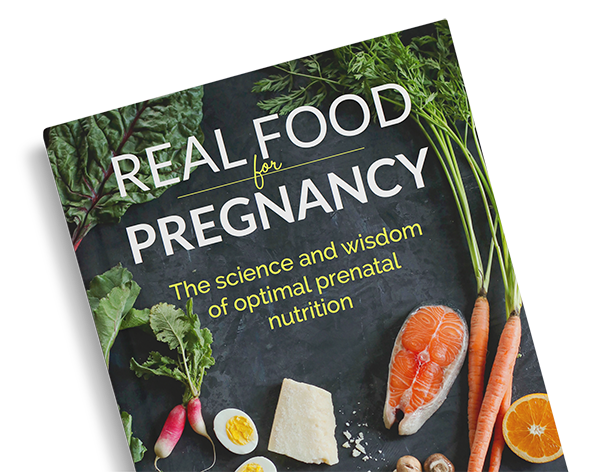
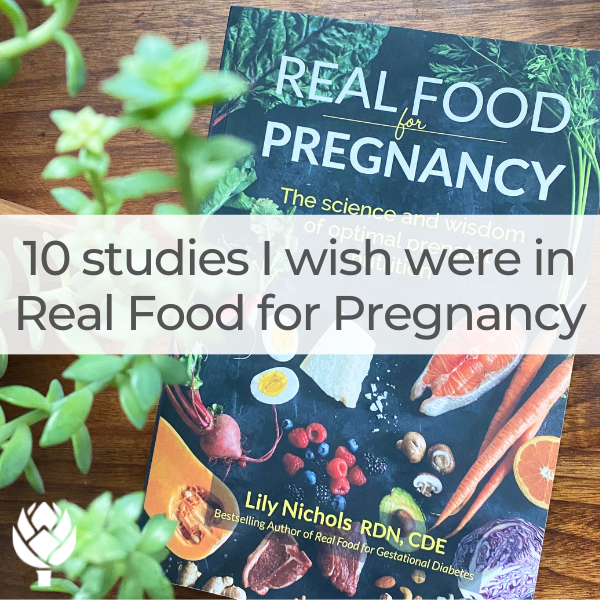

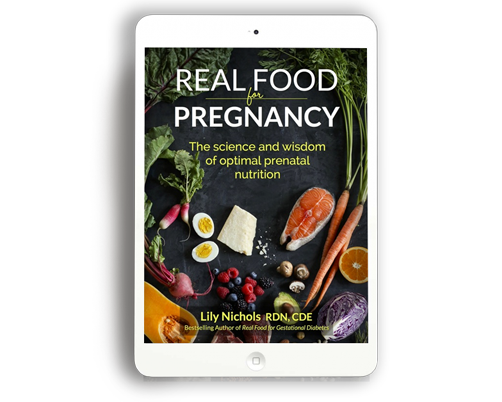
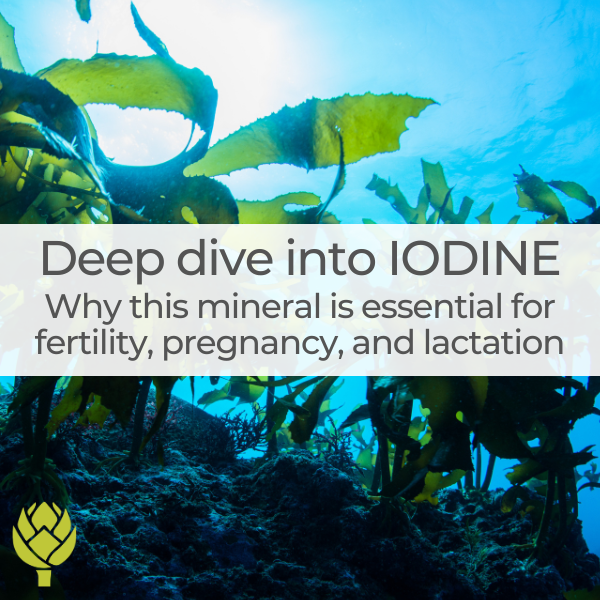

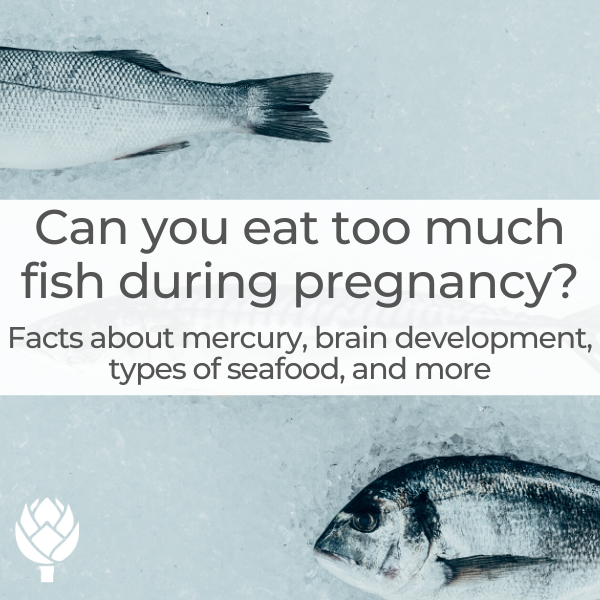
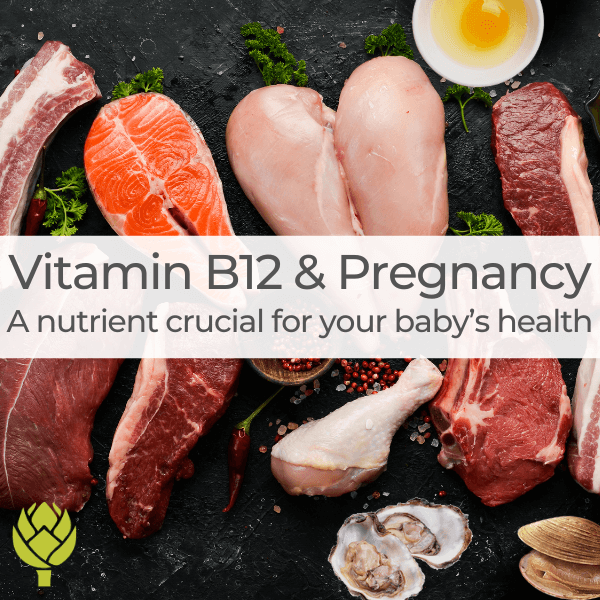

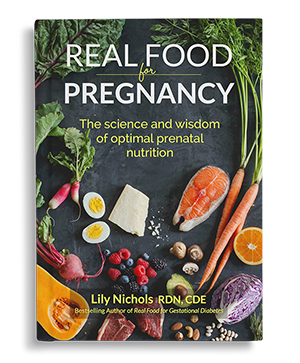
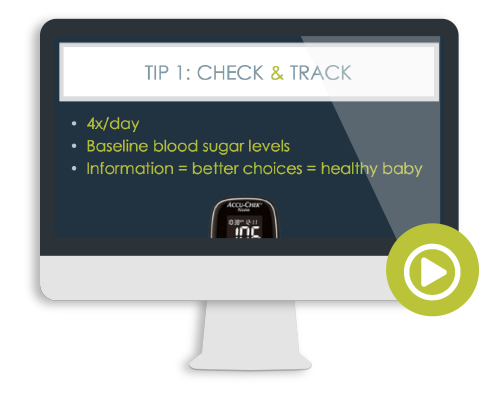
I am not even a mom yet and your book has been so helpful to me!
I credit Real Food for Pregnancy for my healthy pregnancy, from conceiving my daughter quickly to having a super easy pregnancy. I had no swelling, almost no discomfort. I even I wore my wedding rings during delivery! Unlike most of my friends, I had only mild morning sickness and also had no complications. I honestly felt good. Postpartum, I felt nourished and well in my recovery thanks to the guidance of this book. I gift this to all of my friends who share they’re trying to conceive and I, and my family, still live by these food principles now! I owe this book so much more than I can capture in words. THANK YOU ❤️
Forever grateful for the wisdom and knowledge in this book. I was diagnosed with GD in my first pregnancy and managed it with diet and exercise specifically because of this data. The information I was being given by my “dietitian” I was referred to was so outdated and inaccurate and so many more carbs than my body could handle. I didn’t have GD with my second pregnancy because I followed this nutrition info beyond pregnancy. Both my boys were happy and healthy and around 7.5 pounds when born full term. I still follow the recommendations on how to eat and are raising my family based on it as well. We love our full fat dairy and homemade bone broth and so much more! Thank you thank you! This completely impacted my pregnancies abs life in a significant way and I am so grateful!
I read Real Food for Pregnancy halfway through my second pregnancy when I was looking for reliable info on prenatal nutrition. The difference it made from my first to second was incredible! I wasn’t bloated or puffy, had balanced blood sugars, hardly any heartburn or leg cramps and had much more energy to keep up with my toddler! Now in my first trimester with number 3 I’m not as tired or nauseous as I was with the first two! Thanks so much for your work. It has changed the health of our family for the better!
Real Food for Pregnancy was like my Bible during pregnancy and it made such a difference! I stayed comfortable, strong and healthy all the way past my due date. I recommend it to all my preg friends!
This book was so incredible! It was a huge part of my pregnancy and honestly beyond that. Forever grateful for Real Food for Pregnancy as it helped me understand and navigate the proper foods I should be consuming especially having been diagnosed with gestational diabetes. I felt empowered and confident in my nutritional choices. Thank you!